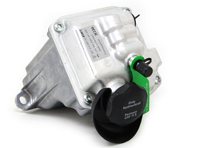Reservoir / Tank

- Porsche Boxster 986 2.5L 1997-99
- Porsche Boxster 986 2.7L 1999-02
- Porsche Boxster S 986 3.2L 1999-02
- Porsche Boxster 986 2.7L 2003-04
- Porsche Boxster S 986 3.2L 2003-04
- Porsche Boxster 987 2.7L 2005 -08/08
- Porsche Boxster 987 S 3.2/3.4L 2005-08/08
- Porsche Boxster 987 MKII 2.9L 2009-2012
- Porsche 996 C2 3.4L 1997-08/01
- Porsche 996 C4 3.4L 1997-08/01
- Porsche 996 C2 3.6L 09/01-2005
- Porsche 996 C4 3.6L 09/01-2005
- Porsche 996 C4S 3.6L 09/01-2005
- Porsche 996 TURBO 2000-05
- Porsche 996 GT2 2001-05
- Porsche 996 GT3 MKI 1999-02
- Porsche 996 GT3 MKII 2003>>
- Porsche 996 GT3 RS 2003-04
- Porsche 997 MK1 Carrera 2 3.6L 2005-08
- Porsche 997 MK1 Carrera 2S 3.8L 2005-08
- Porsche 997 MK1 Carrera 4 3.6L 2005-08
- Porsche 997 MK1 Carrera 4S 3.8L 2005-08
- Porsche 997 MK1 TURBO 2007-09
- Porsche 997 MK1 GT3 2007-09
- Porsche 997 MK1 GT2 2007-09
- Porsche 997 MKII Carrera C2 3.6L 2009-12
- Porsche 997 MKII Carrera C4 3.6L 2009-12
- Porsche 997 MKII Carrera C2S 3.8L 2009-12
- Porsche 997 MKII Carrera C4S 3.8L 2009-12
- Porsche 997 MKII GT3 2010-11
- Porsche 997 MKII Turbo 2010-13
- Porsche 997 MKII GT2 RS 2011-13
- Porsche Cayman 2.7L 987C 2006-08
- Porsche Cayman S 3.4L 987C 2005-08
- Porsche Cayman 2.9L 987C MKII 2009-12
- Porsche Cayman S / R 3.4L 987C MKII 2009-12

Fits:
Porsche 986 Boxster 1997-04
Porsche 987.1 Boxster 2005-08
Porsche 987.2 Boxster 2008-12
Porsche 987C.1 Cayman 2005-08
Porsche 987C Cayman 2009-12
Porsche 996 1998-05
Porsche 997.1 2005-08
Porsche 997.2 2009-12
Click 'Zoom in' for large parts diagram.
Diagram ref no 2.
Related reference numbers
Related, superseded, cross reference or alternative numbers for comparison.
99635511901
The product you are viewing cross references to these numbers

- Porsche Boxster 986 2.5L 1997-99
- Porsche Boxster 986 2.7L 1999-02
- Porsche Boxster S 986 3.2L 1999-02
- Porsche Boxster 986 2.7L 2003-04
- Porsche Boxster S 986 3.2L 2003-04
- Porsche 996 C2 3.4L 1997-08/01
- Porsche 996 C2 3.6L 09/01-2005
- Porsche 996 GT2 2001-05
- Porsche 996 GT3 MKI 1999-02
- Porsche 996 GT3 MKII 2003>>
- Porsche 996 GT3 RS 2003-04

Fits:
Porsche 986 Boxster 1997-05 Cars with 5-Speed and 6-Speed Manual Transmission
Porsche 996 C2 1998-05 Cars with 6-speed manual transmission
Porsche 996 GT2 2001-05
Porsche 996 GT3 1998-05
Click 'Zoom in' for large parts diagram.
Diagram ref no 1
Related reference numbers
Related, superseded, cross reference or alternative numbers for comparison.
99635501301
The product you are viewing cross references to these numbers

- Porsche 996 TURBO 2000-05
- Porsche 996 GT2 2001-05

Fits:
Porsche 996 Turbo 2001-05 Tiptronic transmission
Porsche 996 GT2 2001-05
Click 'Zoom in' for large parts diagram.
Diagram ref no 11
Related reference numbers
Related, superseded, cross reference or alternative numbers for comparison.
99731492050
The product you are viewing cross references to these numbers
High-Quality Hydraulic Reservoirs & Tanks for Stable, Reliable Brake & Clutch Performance
Hydraulic reservoirs—also known as fluid tanks or expansion containers—store and supply hydraulic fluid for brake and clutch systems. These reservoirs ensure a stable fluid level, maintain pressure balance and prevent air from entering the hydraulic circuits. Whether used in performance vehicles, classic models or daily drivers, the reservoir plays a crucial role in keeping hydraulic systems responsive, consistent and safe.
A healthy reservoir ensures the brake and clutch systems always receive the correct amount of fluid, preventing pressure loss, contamination and system failure.
What Hydraulic Reservoirs & Tanks Do
Reservoirs and hydraulic tanks support the system by:
- Storing brake or clutch fluid for use by the master cylinder
- Maintaining correct fluid levels during temperature and pressure changes
- Allowing fluid expansion to avoid over-pressurisation
- Preventing air entry into the hydraulic system
- Reducing contamination via filtered caps or sealed designs
- Supporting consistent pedal feel during demanding conditions
A reliable reservoir helps ensure stable braking and clutch engagement across all temperatures and driving environments.
Why Hydraulic Reservoirs Commonly Fail
Despite being simple components, reservoirs are exposed to
heat, vibration and corrosive fluids. Over time, they may deteriorate or fail
due to:
- Cracking
or brittleness from age and UV exposure
- Internal
contamination from degraded seals or old fluid
- Leaks
caused by stress fractures or weakened hose connections
- Discolouration
or clouding, making fluid levels hard to read
- Warped
or loose caps leading to air entry
- Corrosion
on metal mounting points or fittings
- Heat-related deformation reducing sealing effectiveness
Typical symptoms include fluid loss, soft pedal feel, brake warning lights, or inconsistent clutch operation.
Why You Should Replace a Worn or Damaged Hydraulic Reservoir
Replacing an old or failing reservoir with a high-quality, precision-built alternative designed to match original hydraulic performance ensures your vehicle’s braking and clutch systems remain safe and dependable.
Benefits include:
- Restored fluid capacity and pressure stability
- Clear fluid visibility for accurate level checks
- Prevention of leaks and air ingress
- More consistent pedal feel in brake and clutch systems
- Reduced risk of contamination and hydraulic failure
- Improved long-term safety and reliability
A new reservoir is a simple, cost-effective upgrade that protects the entire hydraulic system.







